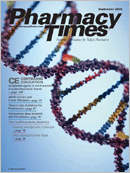Publication
Article
Pharmacy Times
Reducing Medication Errors to Save Lives
Medication errors have beenaround at least as long asdoctors have been scribblingprescriptions. Once in a while, however,something sheds new light on thedisturbing scale and importance ofthe problem.
One such event was the publication ofthe Institute of Medicine's (IOM) latestreport, Preventing Medication Errors.Among the startling statistics in thereport: 1.5 million Americans are harmedby preventable adverse drug events eachyear, and hospitalized patients suffer anaverage of 1 medication error per day.What is the cost? Treating injuries causedby these errors costs more than $3.5 billiona year in hospitals alone, according tothe report.
Most medication errors do not occurin the pharmacy. They occur when prescriptionsare written or when drugs aretaken by the patient. We are all human,however, and humans make mistakes.Asthe report points out, small errors canresult in catastrophe. And for many of us,growing prescription workloads and anincreasingly stressful business environmentadd to the likelihood of makingthose mistakes.
This is why it is worth looking closely atways to help eliminate errors at any stageof the process. Quality-management softwareis available from various sources,including the National Association of StatePharmacy Associations, and many companieshave already taken steps to implementthese tools.
In addition, the IOM describes pharmacymedication information leaflets as"inadequately designed to facilitate consumers' ability to read, comprehend, andact on medication information" andnotes that they vary in quality from onepharmacy to another. It recommendsthat government agencies standardizethe format of leaflets so that the informationis useful to consumers.
Tools that reduce the need for dataentry can have a powerful effect inreducing errors. The IOM's report recommendsthat prescribing organizationsestablish plans for electronic prescribing(e-prescribing) systems by 2008, andthat they—along with pharmacies—should implement the plans by 2010. E-prescribinghas been slow to take off,but momentum has built steadily overthe past few years and is being spurredby use in Medicare and by proposed legislation.It is time to recognize that e-prescribingis a reality and to shed any lingeringreluctance to use it. Adoptingtechnology often involves extra cost andeffort, but e-prescribing may deliver abig benefit: If it can reduce drug errors, itcan save lives.
Mr. Eckel is professor and director ofthe Office of Practice Developmentand Education at the School ofPharmacy, University of NorthCarolina at Chapel Hill.







